Real-Time Measurement of Flash-Flood in a Wadi Area by LSPIV and STIV
Abstract
1. Introduction
2. Materials and Methods
2.1. Study Area
2.2. Camera Installation
2.3. Image Processing
2.4. Discharge Calculation Procedure
3. Results and Discussion
3.1. Field Measurements
3.2. LSPIV Processing
3.3. STIV Processing
3.4. Comparison of Surface Flow Velocities Using Different Methods
3.5. STIV and LSPIV Discharge Validation
4. Conclusions
Author Contributions
Funding
Acknowledgments
Conflicts of Interest
References
- Al-Qurashi, A.; McIntyre, N.; Wheater, H.; Unkrich, C. Application of the Kineros2 rainfall–runoff model to an arid catchment in Oman. J. Hydrol. 2008, 355, 91–105. [Google Scholar] [CrossRef]
- Al-Rawas, G.A.; Valeo, C. Issues with flash flood modeling in the capital region of Sultanate of Oman. In Geomatics Engineering; Schulich School of Engineering, University of Calgary: Calgary, AB, Canada, 2008. [Google Scholar]
- Abdel-fattah, M.; Kantoush, S.A.; Saber, M.; Sumi, T. Rainfall-Runoff Modeling for extreme flash floods in Wadi Samail, Oman. J. JSCE 2018, 74, 691–696. [Google Scholar]
- Tauro, F.; Selker, J.; van de Giesen, N.; Abrate, T.; Uijlenhoet, R.; Porfiri, M.; Manfreda, S.; Caylor, K.; Moramarco, T.; Benveniste, J.; et al. Measurements and Observations in the XXI century (MOXXI): Innovation and multi-disciplinarity to sense the hydrological cycle. Hydrol. Sci. J. 2018, 63, 169–196. [Google Scholar] [CrossRef]
- Welber, M.; Coz, J.L.; Laronne, J.B.; Zolezzi, G.; Zamler, D.; Dramais, G.; Hauet, A.; Salvaro, M. Field assessment of noncontact stream gauging using portable surface velocity radars (SVR). Water Resour. Res. 2016, 52, 1108–1126. [Google Scholar] [CrossRef]
- Tauro, F.; Petroselli, A.; Porfiri, M.; Giandomenico, L.; Bernardi, G.; Mele, F.; Spina, D.; Grimaldi, A.S. A novel permanent gauge-cam station for surface flow observations on the Tiber river. Geosci. Instrum. Methods Data Syst. 2016, 5, 241–251. [Google Scholar] [CrossRef]
- Tauro, F.; Piscopia, R.; Grimaldi, S. Streamflow Observations From Cameras: Large-Scale Particle Image Velocimetry or Particle Tracking Velocimetry? Water Resour. Res. 2017, 53, 10374–10394. [Google Scholar] [CrossRef]
- Adrian, R.J. Particle-imaging techniques for experimental fluid mechanics. Annu. Rev. Fluid Mech. 1991, 23, 261–304. [Google Scholar] [CrossRef]
- Grant, I. Particle image velocimetry: A review. Proceedings of the Institution of Mechanical Engineers. Proc. Inst. Mech. Eng. C 1997, 211, 55–76. [Google Scholar] [CrossRef]
- Lükő, G. Analysis of video-based discharge measurement method for streams. In Proceedings of the Scientific Students Associations Conference 2015, Pittsburgh, PA, USA, 8–11 October 2015. [Google Scholar]
- Muste, M.; Fujita, I.; Hauet, A. Large-scale particle image velocimetry for measurements in riverine environments. Water Resour. Res. 2008, 44, W00D19. [Google Scholar] [CrossRef]
- Fujita, I.; Muste, M.; Kruger, A. Large-scale particle image velocimetry for flow analysis in hydraulic engineering applications. J. Hydraul. Res. 1998, 36, 397–414. [Google Scholar] [CrossRef]
- Sun, X.; Shiono, K.; Chandler, J.H.; Rameshwaran, P.; Sellin, R.H.J.; Fujita, I. Discharge estimation in small irregular river using LSPIV. Proc. Inst. Civ. Eng. Water Manag. 2010, 163, 247–254. [Google Scholar] [CrossRef]
- Harpold, A.A.; Mostaghimi, S.; Vlachos, P.P.; Brannan, K.; Dillaha, T. Stream Discharge Measurement Using a Large-Scale Particle Image Velocimetry (LSPIV) Prototype. Trans. ASABE 2006, 49, 1791–1805. [Google Scholar] [CrossRef]
- Sasso, S.F.D.; Pizarro, A.; Samela, C.; Mita, L.; Manfreda, S. Exploring the optimal experimental setup for surface flow velocity measurements using PTV. Environ. Monit. Assess. 2018, 190, 460. [Google Scholar] [CrossRef] [PubMed]
- Koutalakis, P.; Tzoraki, O.; Zaimes, G. UAVs for Hydrologic Scopes: Application of a Low-Cost UAV to Estimate Surface Water Velocity by Using Three Different Image-Based Methods. Drones 2019, 3, 14. [Google Scholar] [CrossRef]
- Fujita, I.; Watanabe, H.; Tsubaki, R. Development of a non-intrusive and efficient flow monitoring technique: The space-time image velocimetry (STIV). Int. J. River Basin Manag. 2007, 5, 105–114. [Google Scholar] [CrossRef]
- Fujita, I.; Kitada, M.; Shimono, M.; Kitsuda, T.; Yorozuya, A.; Motonaga, Y. Spatial Measurements of Snowmelt Flood by Image Analysis with Multiple-Angle Images and Radio-Controlled ADCP. J. JSCE 2017, 5, 305–312. [Google Scholar] [CrossRef]
- Marian, M.; Jochen, A.; David, A.; Robert, E.; Dennis, L.; Vladimir, N.; Colin, R. Velocity; Image-Based Velocimetry Methods. In Experimental Hydraulics: Methods, Instrumentation, Data Processing and Management, 1st ed.; CRC Press: London, UK, 2017; pp. 168–179. [Google Scholar]
- Abdel-Fattah, M.; Kantoush, S.A.; Saber, M.; Sumi, T. Hydrological Modelling of Flash Flood in Wadi Samail, Oman; Kyoto University: Kyoto, Japan, 2016. [Google Scholar]
- Piermattei, L.; Carturan, L.; Guarnieri, A. Use of terrestrial photogrammetry based onstructure-from-motion for mass balance estim ationof a small glacier in the Italian alps. Earth Surf. Process. Landf. 2015, 40, 1791–1802. [Google Scholar] [CrossRef]
- Burns, J.; Delparte, D.; Gates, R.; Takabayashi, M. Integrating structure-from-motion photogrammetry with geospatial software as a novel technique for quantifying 3D ecological characteristics of coral reefs. PeerJ 2015, 3, e1077. [Google Scholar] [CrossRef]
- Bird, S.; Hogan, D.; Schwab, J. Photogrammetric monitoring of small streams under a riparian forest canopy. Earth Surf. Process. 2010, 35, 952–970. [Google Scholar] [CrossRef]
- Kantoush, S.A.; Schleiss, A.J. Large-scale PIV surface flow measurements in shallow basins with different geometries. J. Vis. 2009, 12, 361–373. [Google Scholar] [CrossRef]
- Coz, J.; Hauet, A.; Pierrefeu, G.; Dramais, G.; Camenen, B. Performance of image-based velocimetry (LSPIV) applied to flash-flood discharge measurements in Mediterranean. J. Hydrol. 2010, 394, 42–52. [Google Scholar] [CrossRef]
- Haue, A.; Creutin, J.-D.; Belleudy, P. Sensitivity study of large-scale particle image velocimetry measurement of river discharge using numerical simulation. J. Hydrol. 2008, 349, 178–190. [Google Scholar]
- Grant, G.E. Critical flow constrains flow hydraulics in mobile-bed streams: A new hypothesis. Water Resour. Res. 1997, 33, 349–358. [Google Scholar] [CrossRef]
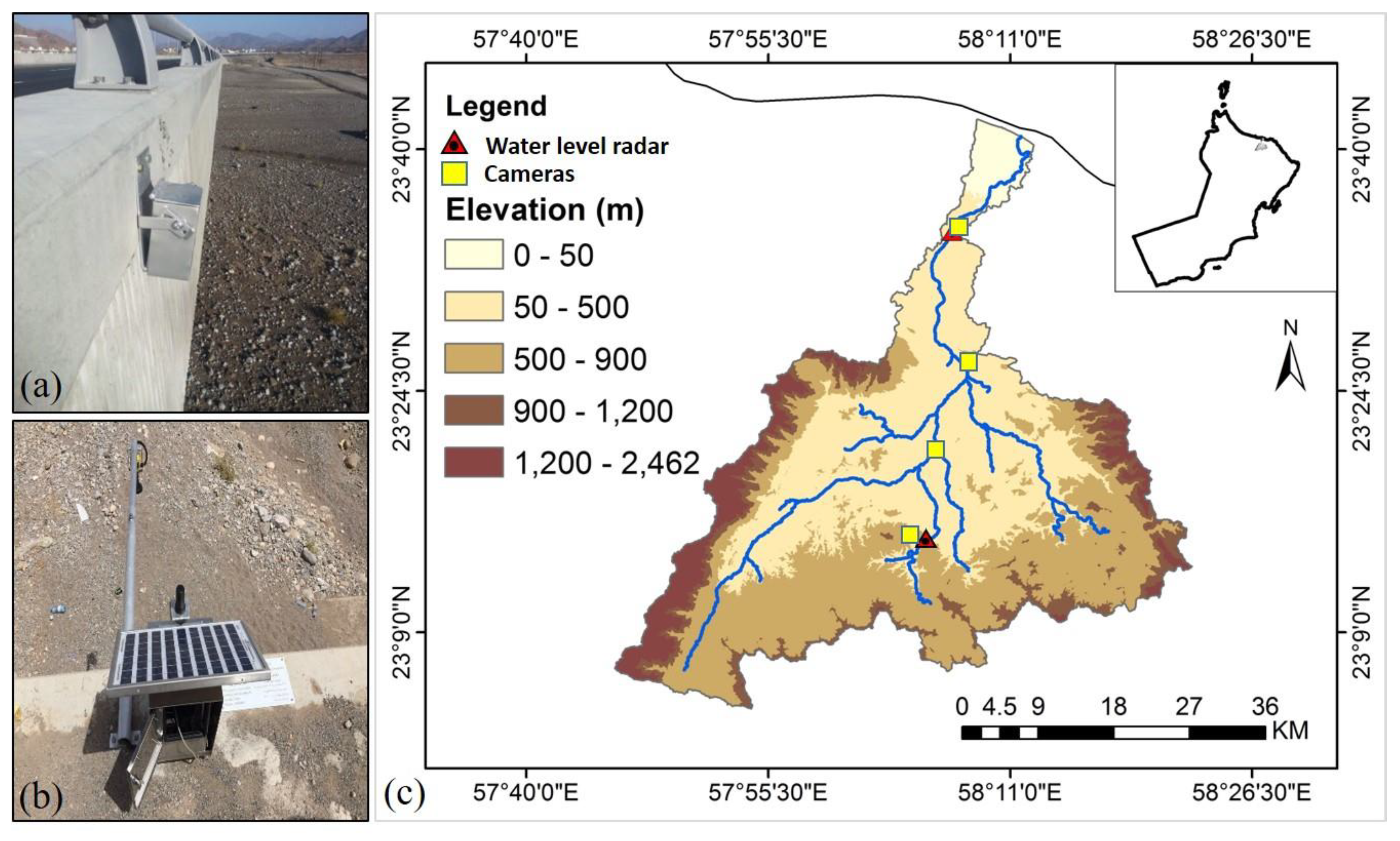
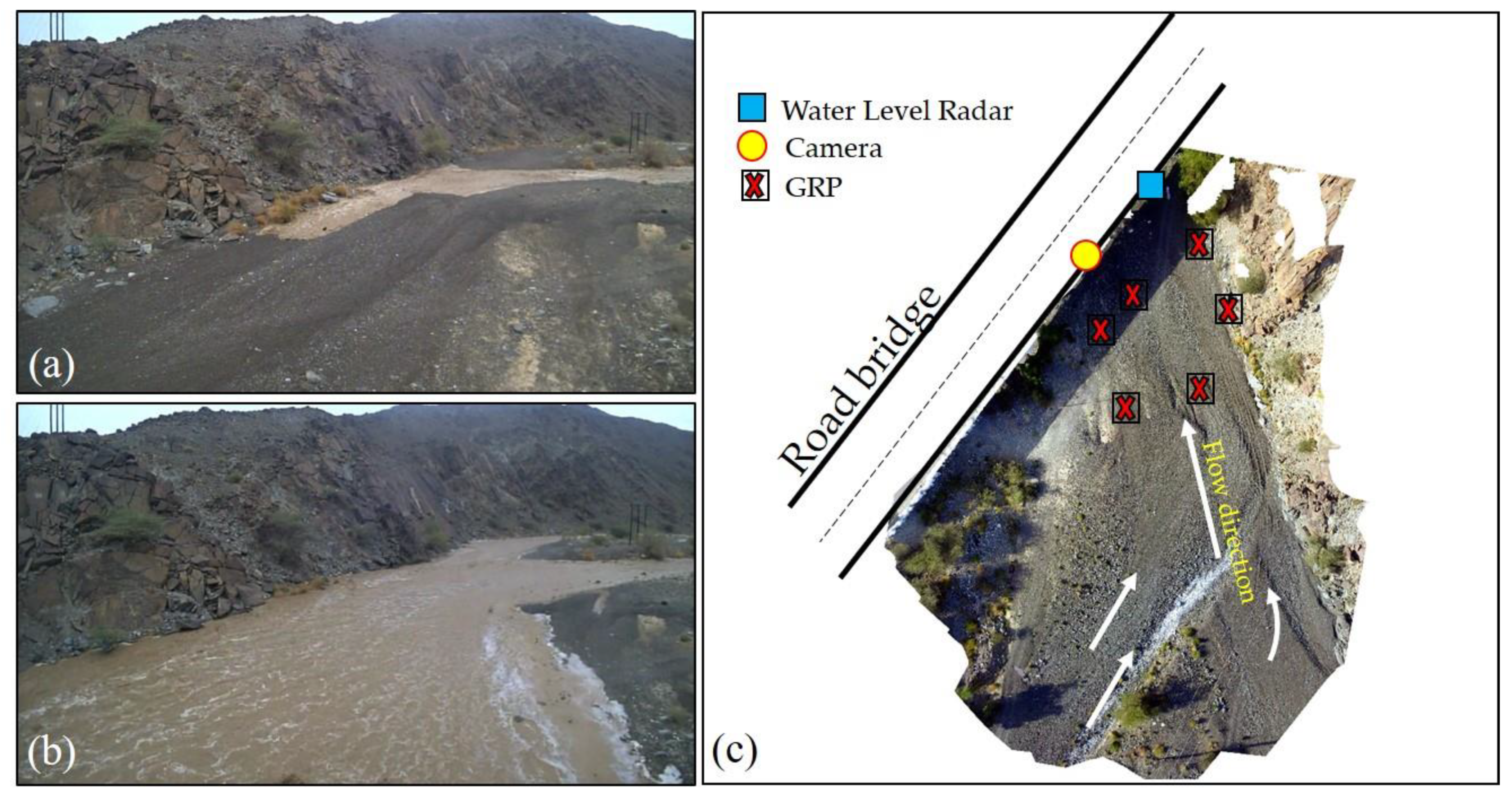
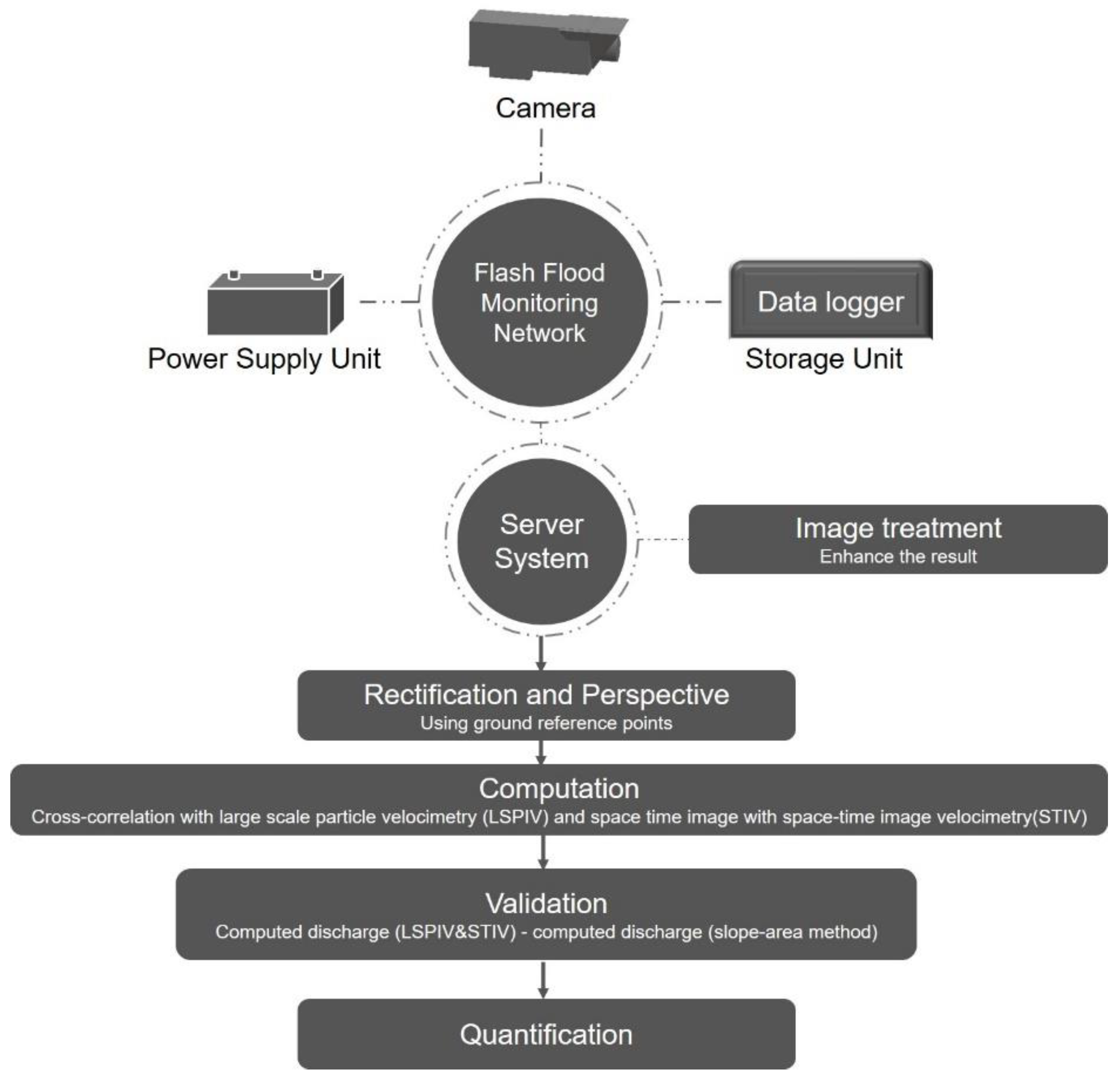
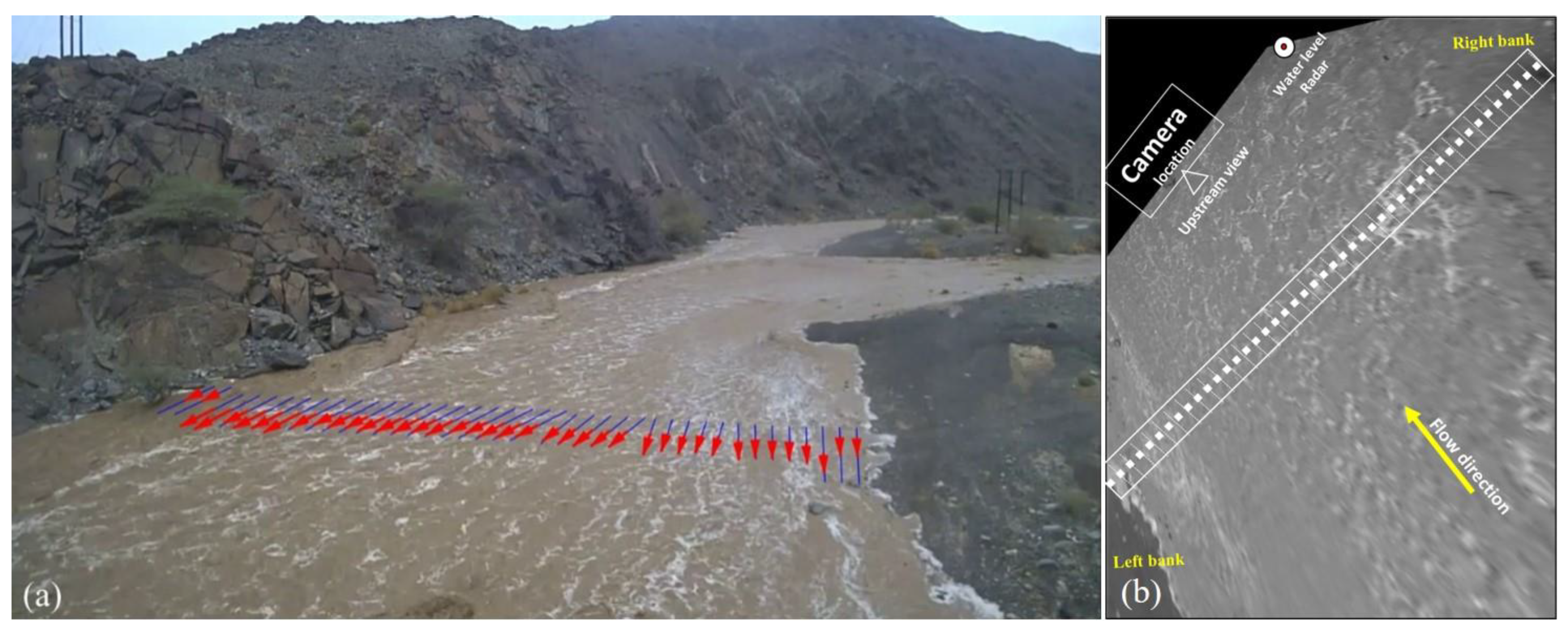

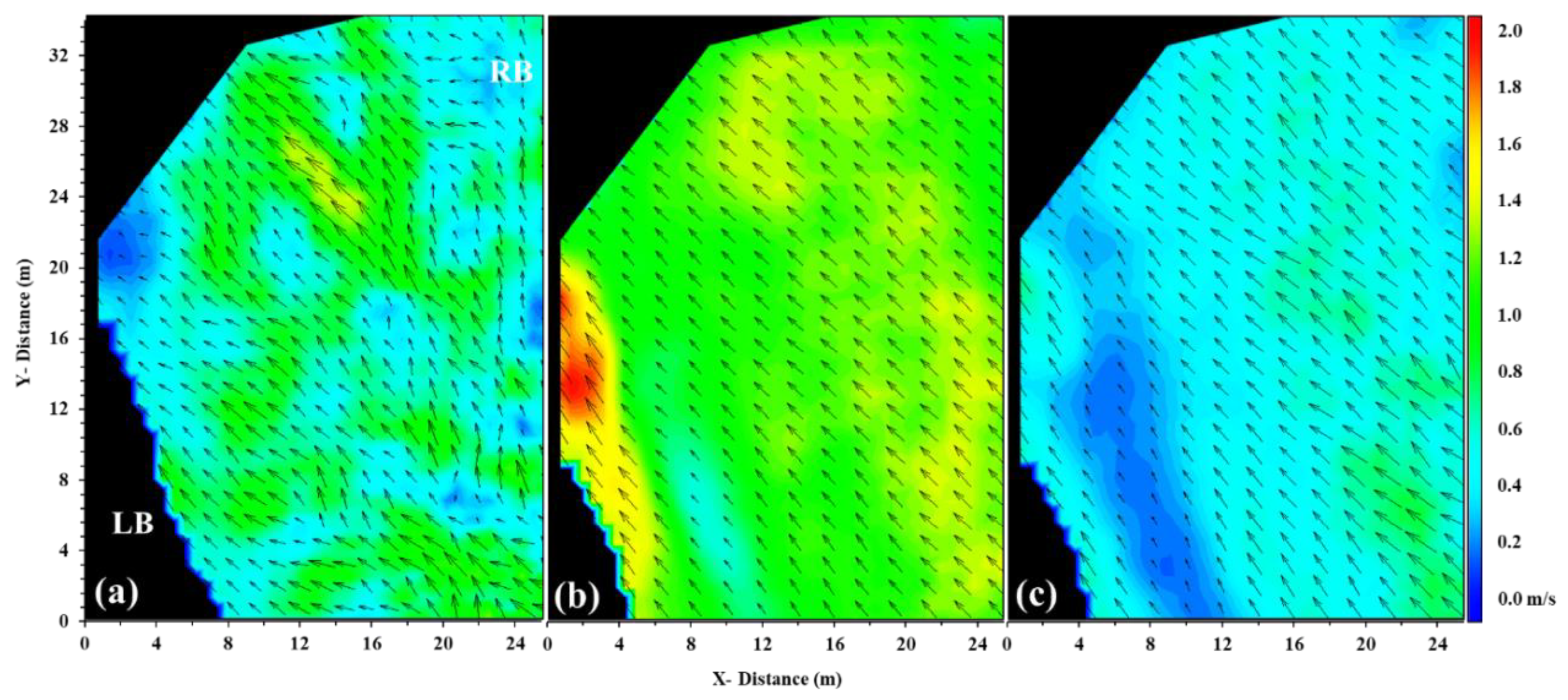
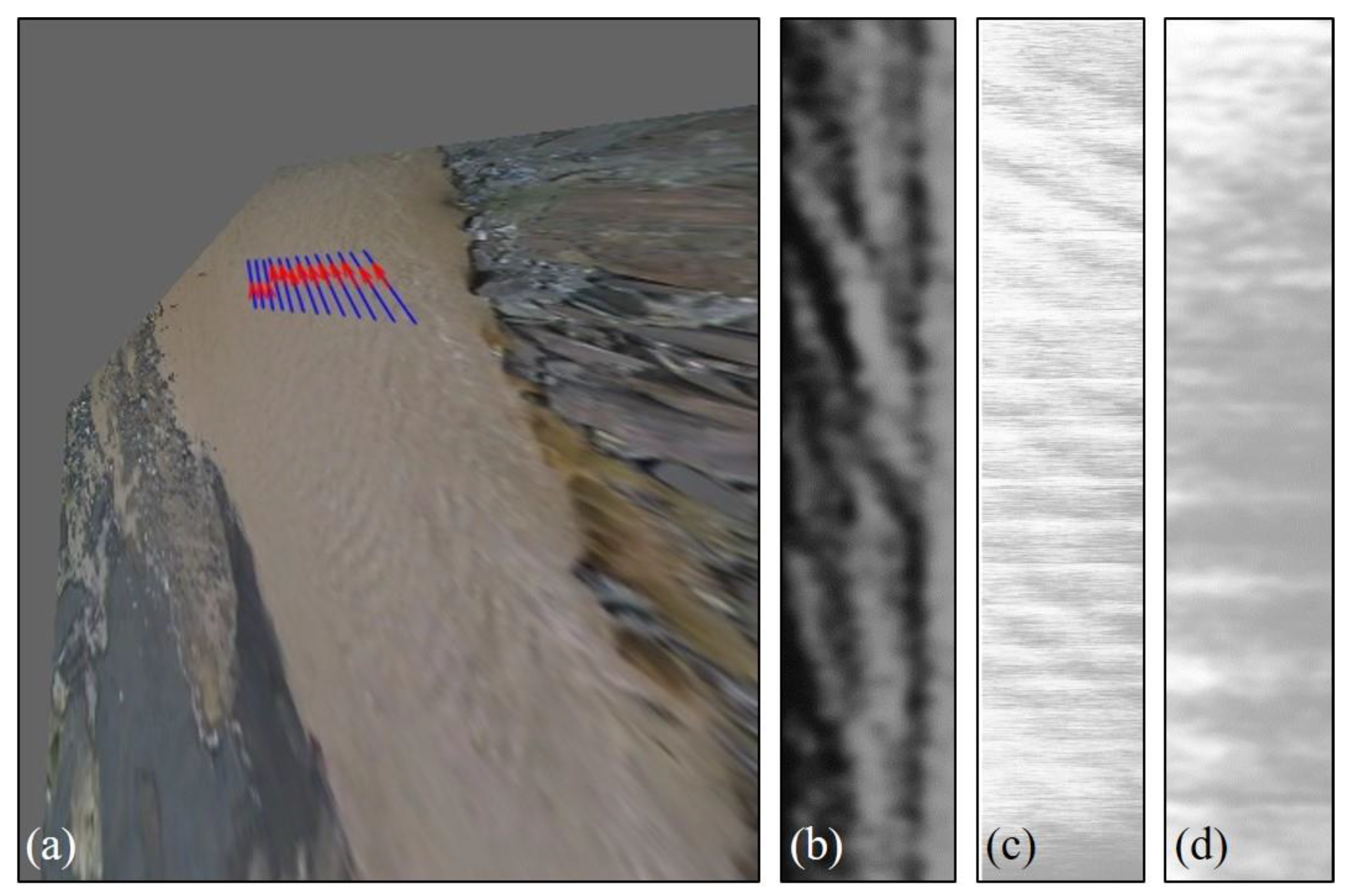
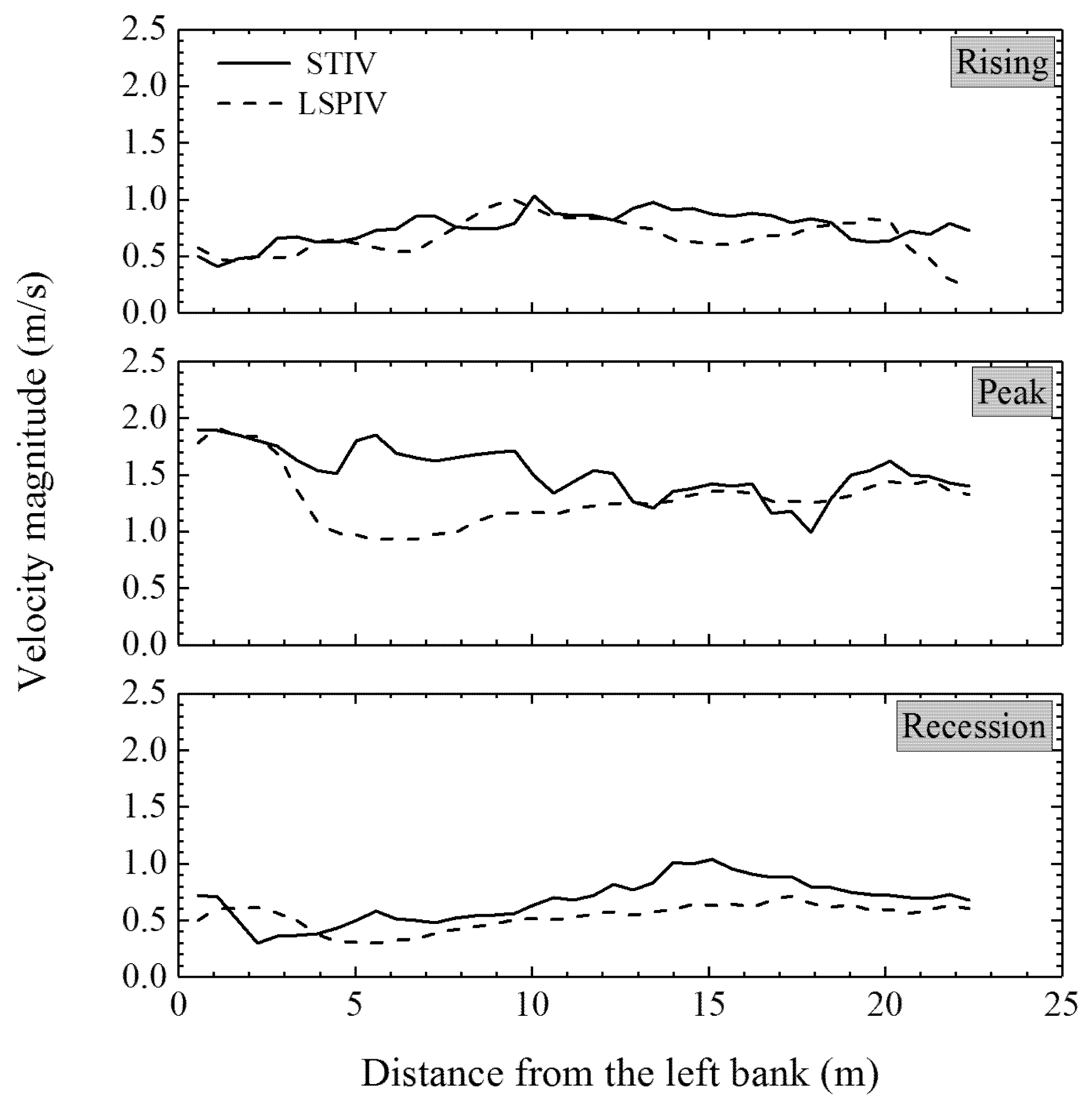
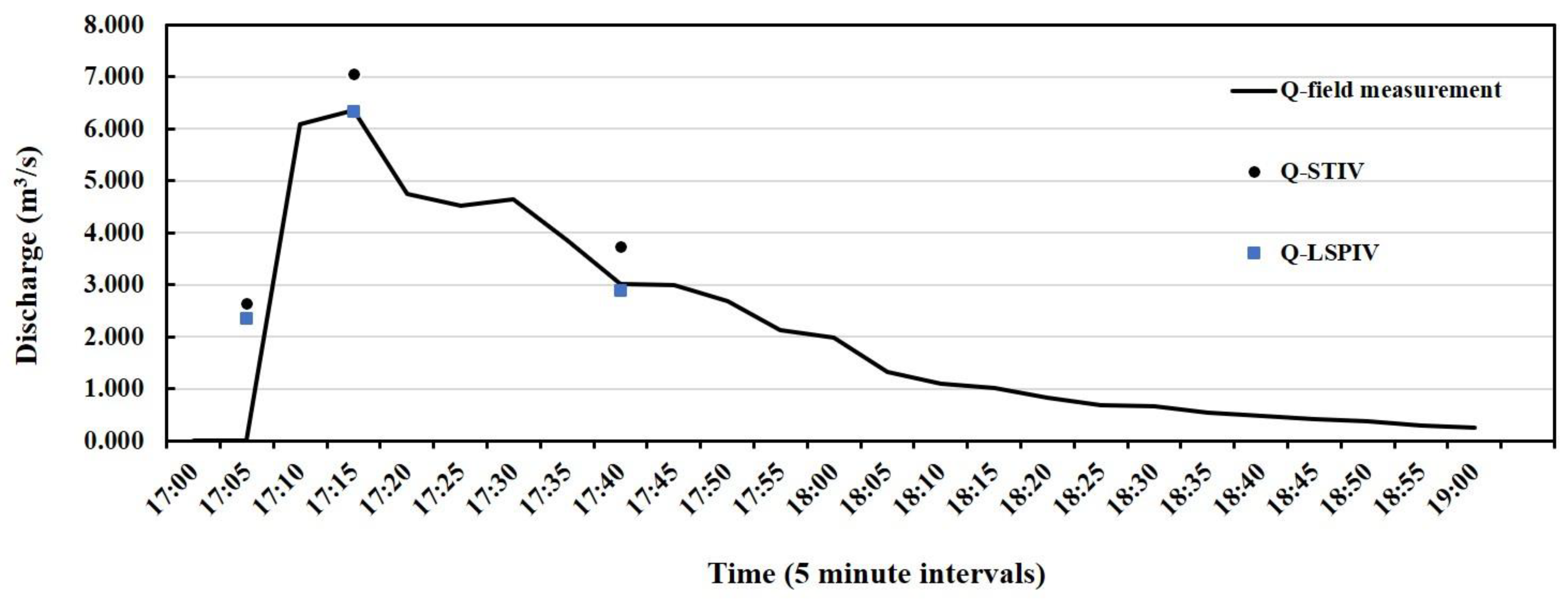
© 2019 by the authors. Licensee MDPI, Basel, Switzerland. This article is an open access article distributed under the terms and conditions of the Creative Commons Attribution (CC BY) license (http://creativecommons.org/licenses/by/4.0/).
Share and Cite
Al-mamari, M.M.; Kantoush, S.A.; Kobayashi, S.; Sumi, T.; Saber, M. Real-Time Measurement of Flash-Flood in a Wadi Area by LSPIV and STIV. Hydrology 2019, 6, 27. https://doi.org/10.3390/hydrology6010027
Al-mamari MM, Kantoush SA, Kobayashi S, Sumi T, Saber M. Real-Time Measurement of Flash-Flood in a Wadi Area by LSPIV and STIV. Hydrology. 2019; 6(1):27. https://doi.org/10.3390/hydrology6010027
Chicago/Turabian StyleAl-mamari, Mahmood M., Sameh A. Kantoush, Sohei Kobayashi, Tetsuya Sumi, and Mohamed Saber. 2019. "Real-Time Measurement of Flash-Flood in a Wadi Area by LSPIV and STIV" Hydrology 6, no. 1: 27. https://doi.org/10.3390/hydrology6010027
APA StyleAl-mamari, M. M., Kantoush, S. A., Kobayashi, S., Sumi, T., & Saber, M. (2019). Real-Time Measurement of Flash-Flood in a Wadi Area by LSPIV and STIV. Hydrology, 6(1), 27. https://doi.org/10.3390/hydrology6010027






